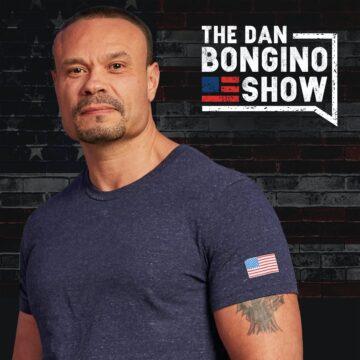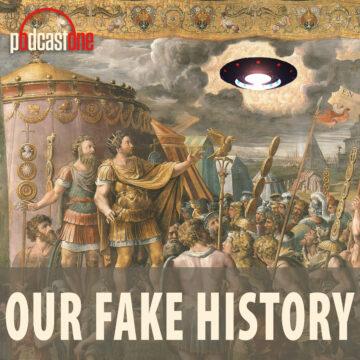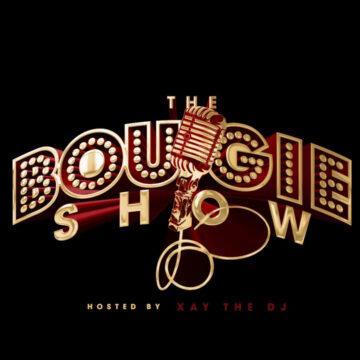Click here for Part One of the interview.
Politics and religion
KS – Some of us who teach and write about Norse mythology have to deal with the dark side of growing interest in this material being connected to the resurgence of white nationalist fixation on these myths and religions.
You were writing the most well-known figure from Norse mythology while far-right mass shooters were name-checking Valhalla in their manifestos. Was the connection between white nationalism and Norse symbols such as Thor’s hammer and the runes ever something you considered as a writer, when communicating with visual artists, or in discussions with editors?
JA – Yeah, somewhat. That’s certainly a thing I became aware of as I was working on the book. I don’t think I really understood that connection coming into it. I became very aware of it.
Part of it is, some of those guys were among the people yelling at me when we announced the Jane Foster story. They really didn’t like it.
 |
| Russell Dauterman cover art for Jason Aaron’s Thor |
It’s certainly something we’re aware of. You have to be aware of all sorts of stuff when you’re dealing with images today, but I wouldn’t say it ever stopped me from telling the story I was going to tell, in any way.
KS – Stan Lee and Jack Kirby already had the Norse gods interacting with the Greek gods back in the 1960s, and later Marvel writers introduced Thor to the Hindu deities.
You moved from interfaith to intergalactic, introducing concepts such as Omnipotence City, where gods from throughout the universe meet and interact, but you grounded your new gods with worshipers and living religions on other planets. They really do seem to be gods – the gods of alien cultures, not the space-aliens-as-gods of Erich von Däniken and arguably Jack Kirby.
You had big, confrontational meetings with the Shi’ar gods, but there’s also a small moment from very early on in your run that you bring back at the very end of King Thor, when he helps a planet that has no gods by bringing in gods who have lost their own planets.
It’s a way of portraying deities within the Marvel universe that is structurally and fundamentally different from the somewhat basic 1960s scenes of big buff Thor wrestling with big buff Hercules, then going off together to get drunk afterwards.
How would you describe your approach to portraying the new gods you’ve created in the Marvel universe?
JA – I think a lot went into that. Like you said, that reference to the very first Thor story I did, where the little girl prays, and Thor ends up bringing new gods – I always kind of meant to come back to that.
My original idea was that those new gods – brand new gods that we make up and design – would be a big part of the book going forward, just to give Thor a different cast. So, some of it was about trying to inject new characters into his supporting cast, because we had seen so much of the usual crew for so long – to bring some new gods into the mix.
It didn’t really work out that way. I still ended up using a lot of those same characters, because I really liked them.
I did want to expand the cast of gods we’d seen in the Marvel universe. Some of that maybe just for selfish reasons. You like to carve out your own little corner of the sandbox, and if I’m making up new gods, I don’t have to share those as much with everybody else. I could do whatever I want to do with them.
The Shi’ar gods, I did not make up. Those existed. We just had rarely ever seen them in person. They’re always just called to by Shi’ar characters. I wanted to make them a big part of the story.
Again, a lot of what I was doing with those gods that I was bringing in was to show how petty and vain and horrible they were, which only reinforces what Thor is learning about gods and worthiness over the course of his journey – and making him question his own worthiness, which all goes back to that first story I did with the God Butcher.
I mean, he’s called the God Butcher, so you can tell he’s not a nice guy. He is a serial killer of gods and goes beyond that to where he’s wiping people out, left and right. But there are times when he’s talking that he’s saying things that I believe, the way I feel personally.
His son, at one point, gives this speech about “wouldn’t it be better if none of you guys existed, and we weren’t all fighting over you?” Like a lot of good villains, I think Gorr has got a good idea. His heart’s in the right place, in some way. He just goes to really horrible lengths to make that happen.
Everything I’m showing with the gods after that is going back to that idea.
Creativity and continuity
KS – I’d like to talk about the idea of creating your own niche in a long-running and ongoing series.
Comics in the U.S. work fundamentally differently than they do in the U.K. Over there, Judge Dredd is a character made of marble. No matter how many writers and artists come and go, no matter what trials the character goes through, no matter how much things in his series have developed and changed, someone in the UK who last read Dredd comics in 1980 could be handed a new comic this week and basically know what is going on.
On the other hand, when Marvel and DC regularly reboot their titles with new writer-artist teams, character designs change radically, and the continuity painstakingly built up by the last team is thrown out by the next team, who then begins building their own continuity.
Your run on Thor seems to have very little relationship to the character’s immediately preceding twenty-first century storylines. You give him a new past and a new future as you create an entirely new history of the character from the dawn of time to the end of time.
How much did you feel honor bound – or even contractually bound – to retain elements of Thor comics from the distant or recent past?
JA – I think this is one of the challenges of telling stories with these characters. How do you honor all that stuff from the past but do something different?
You can’t honor all of it. You can read the Wikipedia page for any Marvel character in existence, and all this stuff can’t exist at the same time. It doesn’t make sense.
Try reading Spider-Man’s Wikipedia page and tell me how you fit all that together. You can’t, so you’re always going to have to pick and choose, somewhat.
KS – I’m a Superman fanatic, but I still can’t understand the latest DC concept of their iconic characters now remembering everything that has happened in all comics eras as if it’s from past lives. That seems like such a mess, to have today’s Superman remember the 1930s and the 1970s.
JA – Yeah, it pains me to say, I grew up as a DC kid, and I can’t always keep up with where DC is at, continuity-wise.
With Marvel, I like that it’s a little more shifting sands, where we’re like what year did Peter Parker get bit by the radioactive spider? It did not happen in the 1960s, even though that’s when it happened, publishing-wise. It probably happened vaguely seven years ago, ten years ago.
What war did Frank Castle fight in before he became the Punisher? Originally, that was Vietnam. What was it now? Maybe, at some point, it was the first Iraq War. Then it becomes the second Iraq War. What will it be ten years from now? I don’t know.
So, you always have to dance between the raindrops. I think there’s an argument to be made that you’d like to see these characters grow up as you grow up, but that’s kind of selfish for you, because what about all those readers who are coming into them for the first time?
I think there’s an argument that Peter Parker should never be married, should never grow up and have kids, probably should still be in high school, in the same way that Bart Simpson is never going to graduate from grade school.
It does become a weird thing where you’re always having to ignore some parts. Tony Stark became Iron Man in Vietnam, so that’s [now] not part of Tony Stark’s origin. You’re always having to refresh the origins.
Me, I like that. I like making these characters relevant. I’m fascinated by any sort of characters we talk about that get rebooted or re-looked at over the course of many, many years. Judge Dredd is one of the few ones where, like you said, they stay the same.
Look at the way James Bond gets reinterpreted over the course of different decades. I like that kind of stuff, so I like that challenge of my job. How do you take the cool part of this stuff, how do you take who Thor is, what makes cool Thor stories exist, how do you take that and show it to somebody who has never read a Thor story? That’s how I always think of it.
Don’t assume everybody comes to the table already invested in these characters and knowing what’s cool about these characters. If you know that as a creator, you have to show everybody. Every issue, you have to show them this is what’s cool about this character, this is why you should want to read that story.
To do that, I think you pick and choose what’s cool before, and then you add new stuff to the mix.
With Marvel, I’ve never been given strict instructions of it’s got to be like this. We figure that stuff out as we go.
With Thor, when I was first pitching it and figuring it out, I knew I wanted to do those young Thor stories. It’s a question of when would Thor have become worthy for the first time and picked up that hammer? We’d seen him wielding the hammer in the past, before, but…
Tom Brevoort – who was not my editor on this book, he’s my editor on Avengers – more than anybody is the bastion of knowledge of Marvel continuity. He’s the one who said, “just give him an axe or something.”
Okay, well, Tom says I can, then Viking Age Thor has an axe. He can’t pick up the hammer yet. I don’t think that fit with all of the Thor history we’d seen before, but that’s why we went with it.
KS – I like it, because it makes sense with the four-thousand-year timeline that we start my Norse mythology and religion course with. In the northern world, before the thunder god was represented with a hammer, he was portrayed with an axe.
The earliest representations show an axe, and that’s what lines up with even more ancient, pre-Nordic materials. The hammer actually historically developed from an axe to a hammer.
JA – Yeah, that’s exactly what we had in mind. Ha!
KS – After having spent nearly a decade building a Jason Aaron mythology of Thor that’s different from the past versions but retains elements of them, how do you feel about what has been retained of your own constructed creation – or not retained – in the new Thor run by the new creative team?
JA – I could give you a very specific, direct answer to that.
I did deal with some of the things from the Thor runs before me, from the J. Michael Straczynski run, from Matt Fraction’s run, Kieron Gillen’s. Asgard was still in Broxton, Oklahoma for the longest time when I was writing Thor, until I set fire to Broxton, Oklahoma.
Donny Cates is the guy who’s writing Thor now. He’s a big fan of mine, a big fan of what I did on Thor. I told him, before he ever started writing it, “it’s yours now, so feel free to take anything I did and set it on fire, if that’s what you need to do to tell your story.”
I think that’s how you always have to look at it. Don’t feel you’re beholden to what I did. I did what I did. I told my story. No matter what you do, it will still exist. As long as it’s in print, it’s still there. People can go read it. You’re not going back and taking anything away. Do whatever you need to do to tell the stories that you gotta tell.
Yet Donnie has touched on things I’ve done, and still his and my stories interact in different ways. What he’s done [with Thor and] Venom goes back to my God Butcher story in a huge way.
You can take those things and use them as you see fit. What you don’t need, throw it out or set it on fire and just keep pushing forward.
As someone who grew up reading comics and loves comics and has a pretty healthy knowledge of continuity, I still don’t want to read stories that are beholden to continuity. Not everybody feels the same.
I wrote Star Wars comics, which was a lot of fun, but Star Wars and Lucasfilm have a very different attitude towards continuity. If George Lucas scribbled it on a notepad back in 1978, you cannot change it. That is written in stone, like it was brought down like the Ten Commandments. They are militant in the way they stick to continuity.
I think that can be a hindrance, at times, to telling cool stories. I’d rather have a continuity that is flexible. It doesn’t mean you throw everything out, but there’s got to be some flexibility there, just to do some new shit with these characters.
Talking to Taika
KS – UK comics writers and artists have long and openly discussed the downside of being a creator within a system that you don’t own, a system that actually owns everything you create for them. Thor: Love and Thunder features the God Butcher and shows Jane Foster becoming Thor, so your writing is at the core of the film.
Do you have any say over how your original creations are used in the movie? Do you have any relationship at all with the production?
JA – No. No formal relationship. Marvel publishing and Marvel Studios are under the same umbrella, in one sense, but nobody from Marvel Studios has ever called me up to tell me what to do in a story. I’ll know what’s coming up in the movies, just so we’re aware of it.
With this [movie], I’ve talked to Taika Waititi, who’s the director, about some things. I’m a little more in the loop on that.
KS – Was he asking you to expound on things?
JA – Yeah. We just talked about different parts of it, but it felt more like a personal thing. Again, the relationship’s not a formal one between Marvel Studios and publishing.
But that’s not a surprise. If you do work-for-hire in comics, you know that’s the deal. I’ve been very happy with my relationship with Marvel and have no complaints about that, but I don’t spend all my time doing work-for-hire comics.
I think for anyone who works in comics, it makes sense financially, it makes sense for the long-term health of your career, and for me creatively to do stuff that’s yours, to do stuff that you own and control and that’s original, which has its own headaches and challenges, too.
I enjoy, for pretty much my entire career, being able to do both. I broke into comics doing original work and doing work-for-hire superhero stuff. I still enjoy doing both. I don’t know that I want to be writing monthly, ongoing comics forever, because that can be a bit of a grind. I think I’ll always want to do work-for-hire stuff at the same time that I’m doing my own stuff.
KS – I’ve read that you now have an exclusive Marvel contract. Is it still work-for-hire, even with that?
JA – I’ve been exclusive to Marvel for ten years or so. Longer. Quite a while.
It guarantees you a certain amount of work, probably gets you more money than you would get without it. It basically just means you can’t go write Superman or Batman.
KS – But it doesn’t mean that you get a cut of the movie using the characters you developed?
JA – I can’t speak to what it’s like at DC, but at Marvel there are character creation participation agreements. It has to be judged by whether or not that character is derivative or not.
I have those agreements for a lot of different characters I’ve created, so it means you get something. It doesn’t mean you’re going to get rich, necessarily, off of them making statues and toys and TV shows of your characters, but you do get something as opposed to nothing.
Questions from college students
At this point, students in attendance were invited to ask questions.
Student 1 – Going back to what you said about how sometimes there’s a line that you hold for a better moment or some conversations that you know may not fit where you are currently. Was there ever a character story that, for whatever reason, didn’t really fully come to fruition that you kind of wish had?
JA – The Mighty Valkyries #1 came out this week. As part of that, for my newsletter, I went back into some of my old notes and outlines for old Thor stories and pulled some stuff out from of the beginning of the Jane Foster story.
| Mattia De Iulis cover art for Jason Aaron and Torunn Grønbekk’s The Mighty Valkyries |
Looking back through those, most everything I saw was stuff I eventually did. It might have been six years after I wrote that note that I got to the story, but eventually I did.
There’s always going to be stuff that winds up on the cutting room floor. To me, it’s always good to leave with a little bit of gas still in your tank.
I wrote Thor for seven years, over the course of a lot of different series. In my mind, it’s still one long story, but you sort of have to Google to figure out in what order do I read these books, because there’s Thor: God of Thunder and Thor and Mighty Thor and Unworthy Thor.
It’s a lot of different books, so it’s a challenge to stay on a character that long and keep writing as the book changes and gets relaunched and whatnot.
When I started writing Thor was the first time I’d been at Marvel long enough and had enough confidence to say this is going to be mine, and I’m going to stay here until I’m done or the sales tank, and you guys take it away from me.
I had plenty of opportunities along the way to leave Thor, and I said no. So, I was able to write with the sort of confidence of all right, I have this idea. It’s going to take me five years to get there, but I’m just going to assume I’m going to have those five years and write with that confidence.
I’m sure, by the time I was done, there were still a couple of things in there that I didn’t get to. Nothing big that I can think of, but…
I’d say that, on my original outline, there was at least one arc on there that I never did that I had originally planned. So, maybe that’s something I’ll get to, somewhere else down the line.
But there have been plenty of cases where I’ll have a character, an idea that I don’t use that I’ll use [later], maybe even in another book. I had a John Constantine, Hellblazer story that I never did that I ended up doing as a Wolverine story years later, so that happens a lot.
Student 2 – Obviously, you spend all this time writing and developing all these characters. It takes years to get from one end to the other, and then they’re translated into movies that have two hours to get this really well-developed character into a film.
How do you feel like all these characters are depicted? Do you think they do a good job at getting that all into the films, or do you think there’s still a lot more than they could do to depict these characters?
JA – If you’re talking specifically in terms of Marvel movies, they’re not all created equal, right? Some of them I like more than others, so it’s a challenge.
I’ve adapted some of my own stuff before, so when you’re when you’re working within the constraints of a TV show or a movie, it’s a different ball of wax. You gotta serve a lot of different masters there.
Even in times when they get something really right… I don’t think that first Captain America movie is my favorite, by any stretch. It’s probably my least favorite of all the captain America movies, but the early stuff with Steve before he becomes Cap, when you see this is who this guy is before we get some muscles and the shield. This is who Cap is. That, I think, is some of the best character stuff in any of the Marvel movies, even though once he becomes Cap, maybe the movie’s not quite as good.
I think it’s hard to do all that stuff. I like that first Thor movie. I think there’s some good stuff in that. It bothers me that we never see him pick up the hammer, when you make a point of showing that he can’t pick up the hammer. Nobody can pick up the hammer. We don’t ever see him pick it up. It flies to him, which is not the same thing as showing him pick it up.
That bothers me, and I’m sure there’s a reason why that happened. I’m sure that was probably in some version of the story. At some point it got changed for different reasons.
For the most part, I think the Marvel films have a lot of the good character stuff that makes you… You gotta like these characters and be invested in them, before you give a shit when Thanos snaps his fingers and makes them disappear. I think they, for the most part, do a really, really good job.
It’s because they’re doing exactly what I talked about, what people who do my job do. They’re going back and picking and choosing all the good stuff from all the best versions, all the best stories from these characters over the course of decades.
Look at the Falcon and the Winter Soldier show and the number of different stories they’re taking things from, a huge long list. That’s what you’re able to do when you have this wealth of material to choose from.
Student 3 – I’m writing a high fantasy novel right now, and I’ve found that world-building can be super fun when you really get into the weeds and start getting down into this guild, this association, the city, all of the different inner workings of it. But then you eventually get to the point where every single thing has a thousand-year backstory, and you get too deep into it.
So, I’m curious what your process of world-building is and where you get to be like this is enough, this is where I have all the information I need to tell the story.
JA – For me, it’s exactly that. It’s more about telling the story, and what adds to telling that story and what doesn’t.
I love all that stuff, too. I love the Song of Ice and Fire books. I love the all the Game of Thrones books. I love that he spent so much time talking about what they eat.
Every time they sit down for a meal, you’re going to get a list of what they had for the eight different courses. I like that. That does help inform you that what they eat in King’s Landing is different than what they eat in Winterfell and wherever else, so it is world building, in that sense. It doesn’t mean you have to do that, every time they sit down for a meal.
With Thor, when I first took over the book, I couldn’t name the Nine Realms. I didn’t know which one’s the fire one, which one’s the ice one. I didn’t know any of that. So part of it, I wanted to learn that, and I wanted people reading the book to know, because it also hadn’t been consistent in terms of how those realms were shown in the years leading up to that.
I wanted to nail down, this is the dead setting for Thor stories, these are the realms he goes to, this what they look like, so that people know are they good, are they allies, are they enemies.
To do that, in a way, was world-building but also telling a story. I had the idea of building towards a big war. There’s going to be a war. The realms that are going to war, they will move from one realm to another and, eventually, make their way to earth.
So, that pretty much became world-building, just in service of that story – or story in service of world-building. What I really did is, over the course of years and multiple different stories, just sprinkle that stuff in there, just to drive the story along.
I agree, not falling down that hole and getting lost and just the world-building. I think it’s good to just use whatever you need to do to tell the story, to propel the story along.
KS – As you were building those worlds over the years, I liked that you didn’t have heavy exposition. We got a little taste of how the Vanir were different, but it didn’t feel like information being vomited to the audience. Instead, we read it, and we wonder why this guy is wearing this giant animal skin.
I like it when it’s not explained, when there’s mystery left to it. Sometimes, it’s positive to not only not get lost in the weeds, but just to let the audience see the weeds over there and wonder.
JA – Some of that goes back to me feeling confident enough to say I’m going to do this over the course of years. I couldn’t have done world-building for nine realms – we ended up with ten realms, because we made up another one – I couldn’t do world-building for ten realms in one arc or two arcs.
But to be able to sprinkle it here and there, over the course of twenty arcs or however many, that’s feasible. So, some of it is just taking the space to do that.
We made up symbols for the different realms when we did War of the Realms, and I ended up getting a tattoo for one of them, of Muspelheim. So, I went from not knowing what the hell Muspelheim was to getting our symbol for it tattooed on my body.
| Arthur Adams cover art for Jason Aaron’s The War of the Realms |
It’s the one promotional tattoo I have. Marvel Comics paid for me to get the tattoo.
KS – What, really?
JA – Yeah, just to promote War of the Realms, but it’s the one and only time they’ve ever done that and ever will do.
Student 4 – I saw that you were involved with Heroes Reborn, and I wanted some insight on how that project works. I know that you’ve written for the Avengers, so what is it like to over-write the Avengers, basically?
JA – It’s something that sort of grew out of my Avengers run.
The Squadron Supreme are Marvel characters that have been around for a long, long time. You might say they’re analogs of some other characters you might know. I’ll let you figure out for yourself who that is. They’ve been a part of my Avengers run in a big way.
This was, basically, doing one of those What If? or alternate timeline stories. What would this Marvel universe look like if the Avengers never existed, if Captain America was never pulled out of the ice? The Squadron Supreme are now and have always been the heroes at the center.
It changes stories from Marvel’s past and a lot of the other characters. There’s no Spider-Man. There’s no Fantastic Four.
Heroes Reborn is eight issues. Each one gives us a different look at what this universe looks like. Each issue focuses on a different member of the Squadron. There’s a Hyperion issue, and Nighthawk and Blur and Power Princess.
It’s hard to talk about it. I don’t think people will even really get it or understand what it is, until you read it. I will just say I’ve had tremendous fun with this. It’s eight issues over the course of two months, so I had to write all of it in advance. A lot of it, I wrote last year. It was one source of joy in the midst of last year. I had a crazy amount of fun with it.
They’re all going to print now, so I’ve been doing the lettering corrections these last few weeks and having a lot of fun, all over again. I’m excited for people to see it. I’ll say that. Let’s see what people make of it.
KS – How long does your Marvel contract go? Are you near the end, or will it go for a while, yet?
JA – Not near the end. I’ve got over a year left, at this point. So, I’ll be around for at least a bit longer.
KS – Thank you for really getting into this stuff and explaining how you work with all this great material. We all appreciate it.
JA – It always helps when people ask good questions. I’m a quiet guy, but I can talk about nerd shit all day. Thanks for asking good questions. Thanks for everything. You guys all had good questions. Thanks, everybody.







